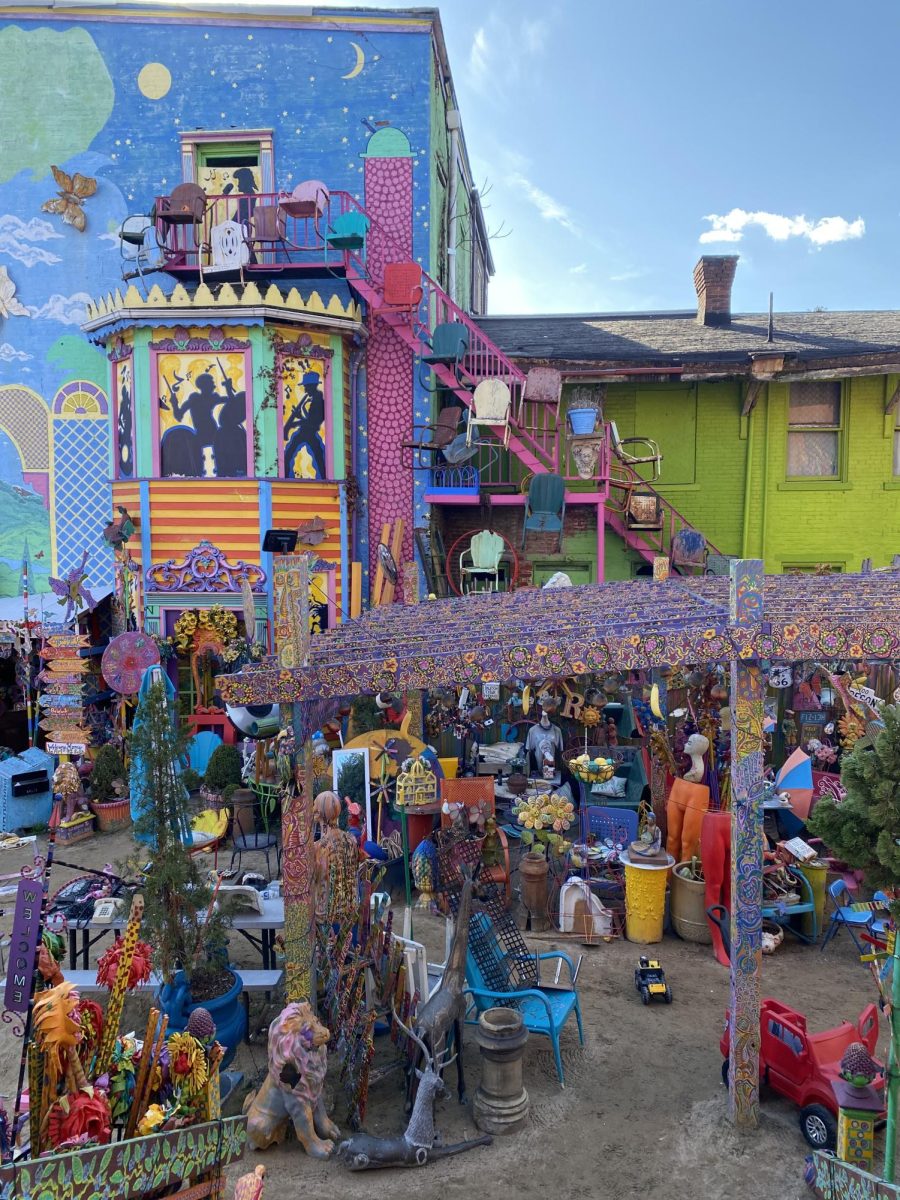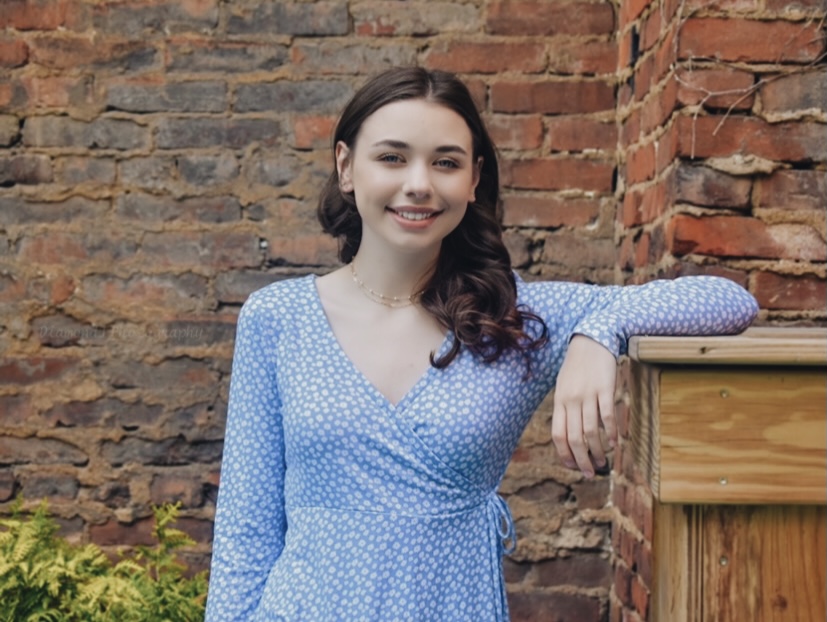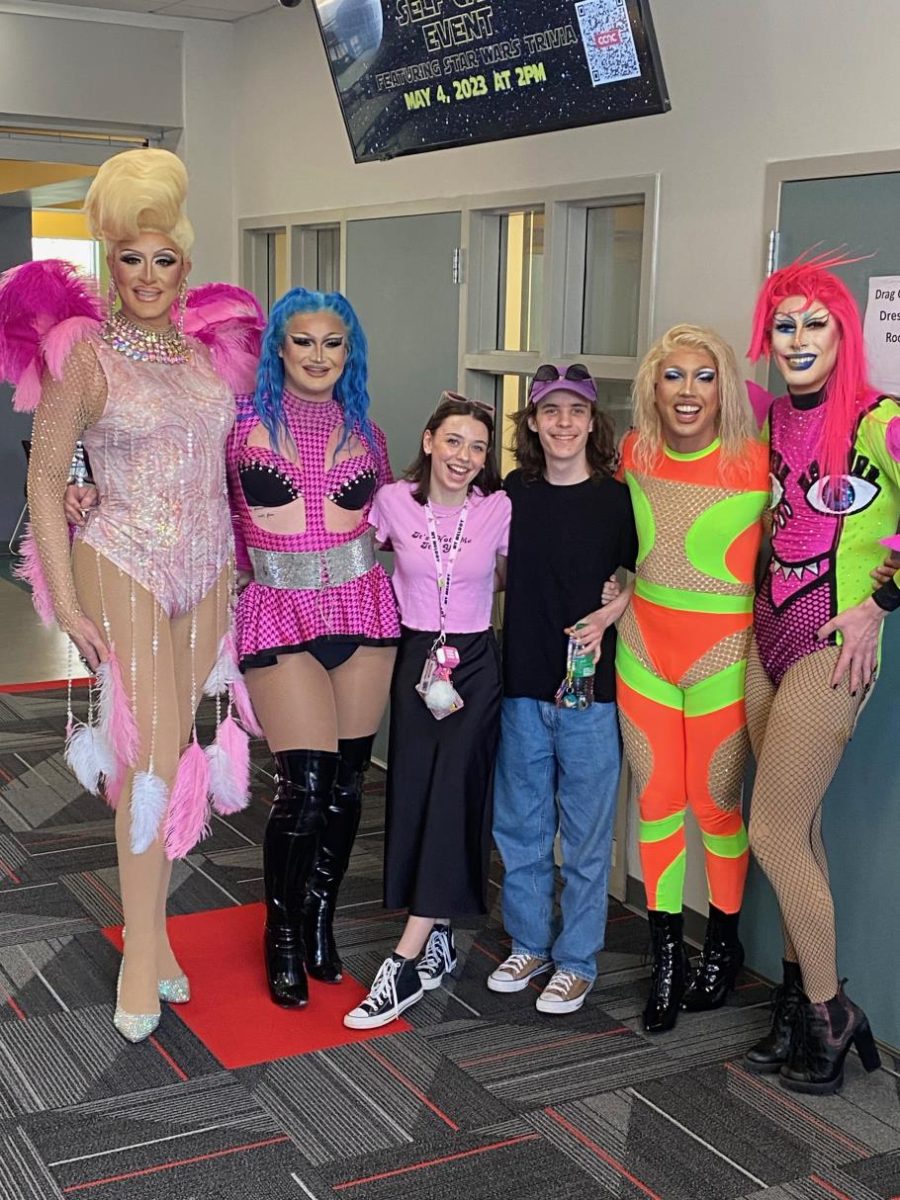The Mexican War streets, located in Pittsburgh’s North Side, are an exciting neighborhood filled with incredible art and historic sights to see. The streets are named after significant people and places that were involved in the Mexican American war. Pittsburgh ended up playing a slight role in the conflict, though it was not a battleground during the war. Pittsburgh’s NPR News station reporter, Katie Blackley, says “In 1845, the United States annexed Texas from Spain. Disputes over the location of the border between America and Mexico quickly escalated. In 1846, the American government sent troops to the border, including men from the Pittsburgh region.” The war was short lived, ending in 1848 after two years when the US claimed victory (Blackley). During 1848, people in Allegheny were starting to settle in a new neighborhood after Mayor William Robinson purchased land in the North side (Blackley). As they began building streets and homes, they thought “What better tribute than to name it after what was going on right then?” (Blackley).
Blackley also names a few well-known streets that were named in tribute to the war, stating “Monterey, Palo Alto and Resaca streets were named after significant battles in the war. And there’s Taylor Avenue after President Zachary Taylor, and Fremont Street after Captain John Fremont.” Many buildings and homes located in the Mexican War Streets were not fully built and designed until the early 1900s (Blackley). Much of that architecture can still be seen today as most of the homes and buildings surrounding the neighborhood are over 100 years old. I walked around the neighborhood and enjoyed seeing the old quirks each home still had. Many black iron fences guarded staircases and stained-glass windows. Floral designs surrounding the windowsills matched each home after being preserved and repainted by the artists who occupied them. I tripped along the brick sidewalks that were coming out of place and stared at the long vines crawling up the Victorian style homes. I noticed the front doors of each house were painted with bright colors of red, hot pink, yellow, purple, light green, and orange. Each of them had antique looking mail slots, door knockers, and peek holes. The color schemes of each home complemented the next regardless of how different they were.
These homes are artistic, yet old-fashioned and opulent. Though there is a lot of wealth throughout the community, it is extremely diverse and lively with people. I saw lots of dogs and children playing, strangers were more willing to interact with one another. I noticed how much creativity people put into their outfits as I walked by. A woman wearing big sunglasses, a long floral blue skirt, sage green boots, and a white fur vest particularly struck my attention as we were parking. Art is displayed on every corner unlike anything I have ever seen before. Rainbow painted signs pointing to popular places I could go, as well as handmade signs reading “Caution Slow Down Children” and “Stop Pets Children.”
My boyfriend, my mom, and I decided to stop at a small market called “The Mayfly” that was a cute mom and pop shop where you can buy groceries, produce, and meals to go. The selection was slim, consisting of tiny, organized pantries. It looked like someone turned their basement into a cozy modern store with just the most random, but essential, home goods, homemade food, fresh produce, and even souvenirs. There is a corner dedicated to the books of local authors and products from small local businesses, such as handmade soaps, dishtowels, and candles. My mom and I both got a coke to sip on during our walk while my boyfriend enjoyed a to-go lunch sandwich freshly made with turkey, apricot spread, and spinach. Somehow that was a whopping $23, but it costs more to support these smaller businesses, and the community can afford it. The area is considered upper class with more wealthy individuals living there. These 100-year-old homes typically do not sell for less than $200,000, according to youtuber Dean Bog who interviewed a local journalist for his project to explore the neighborhood.
After leaving The Mayfly, we walked through the community garden that was filled with more objects than plants. The yellow picket fences with small hand painted flowers surrounded the garden full of make-shift benches, brick pathways, glass bottles planted into the ground, small flower beds, and a random sink with dishes – not sure what that is about. This neighborhood is artsy to say the least. Nowadays, the Mexican War Streets are home to many of Pittsburgh’s artists and journalists such as Damon Young, a writer and editor for the Post-Gazette and Randy Gilson, artist, and creator of Randyland. Though I had never been to Randyland before, I had seen pictures of it online since it is a popular spot to take photos as of recently in Pittsburgh. As we left the community garden, I could see the infamous rainbow painted Randyland building from 3 blocks away. As Gilson tells WQED Pittsburgh, “Randyland is not boring.” When Randyland opens each day, it is “entertainment time” as Gilson says (WQED Pittsburgh). Randyland is a creation that resembles what most people only see in movies, and Gilson is the main character.
The bright yellow painted building considered to be the most painted house in the East, is covered in objects hanging from the sides, including a big Coca-Cola sign, metal figures of butterflies, old street signs, graffiti style art, and an enormous map of Pittsburgh with 3-D cars hanging off of the mural. As we walked to the entrance, I saw a small community library and brightly colored painted trashcans that were neon purple and orange, reading “THANKS!” The “Museum of toys” along the sidewalk displayed hundreds of old looking toys that were repurposed and nailed into posts as decoration, seemingly the real-life island of misfit toys. Trees on the sidewalks had rainbow beaded bracelets wrapped around them, and signs planted in front reading “Protect TRANS Kids” and “Black Lives Matter.” Along with plenty of hand painted murals with words of encouragement on the outside of the building, reading “CAUTION: Humans – USE ANIMAL INSTINCT” “WARNING – BRAIN, a filled sponge of infinite thoughts” “Your Mind Is A garden. Your Thoughts R The Seeds. You Can Grow flowers Or You Can Grow WEEDS” Randyland is a loud, colorful place of acceptance and encouragement. The artwork on the Randyland building is reminiscent of the hippie aesthetic in the 70s, the time period Gilson grew up in.
As I entered even further, I saw thousands of broken toys and objects that most people would consider junk. Mannequins, large stuffed teddy bears torn apart, rubber tarantulas, couches, dollhouses, and anything else you could name was all repainted and upcycled into abstract art for Randyland. One of my favorites was the mold of a pregnant woman’s belly. Gilson’s art is his “therapy,” his “medicine,” and his “home” as he tells youtuber Chris Urbine in a personal interview. Gilson, however, identifies with these trinkets that were once in the trash. He considers to be himself a broken misfit in society ever since he was a young boy, but that does not stop him from loving life and seeing the good in everyone. Posted on the outside of his building under the many large, brightly colored hanging pieces of art, a sign reads “Hi, Randy’s Story – Hi, Have you ever been bullied? Hello, I’m Randy Gilson, 1/27/57. I’m different, I’m Retarded, I’m A Broken Tape Measure. My Life Understands ME. I Will Never Be Like You. I’m Happy – Please Be Happy. Everyone Is Unique/A Gift. We Are “US” – Don’t Worry. Do You Feel Like Me?”
Gilson was raised by his single mother, occasionally experiencing homelessness with his 5 siblings according to Joe Hernández who writes for Spaces, an organization dedicated to studying and preserving art and cultural environments. As a child, Gilson would search the neighborhood for broken and abandoned toys, bringing them home to fix them, and into the house on Christmas Eve for him and his siblings to play with (Hernández). By the early 1980s, Gilson was living in the Central North Side of Pittsburgh, working as a waiter and part-time student at CCAC, pursuing a cooking certification (Hernández). Though he was not successful in school, he grew to love the Victorian architecture of the homes in the Mexican War Streets. After living through homelessness with his family, Gilson understood the importance of recycling and working a dollar better than most Americans do today (Hernández). By 1995, he was able to dip into his savings from being a server and after convincing the bank to give him a loan, he bought the infamous building we now know as Randyland for $10,000 on a credit card (Hernández, WQED Pittsburgh). That’s a bargain in comparison to what people are paying to own homes in this part of town nowadays. Gilson also used his tips as a waiter to buy returned paint in bright colors or defective products on clearance to make into his own abstract art (Hernández).
Gilson tells WQED Pittsburgh that he tried to fix the building after he had gotten it in an auction, leading into the massive folk-art museum project, Randyland. He started by gathering stones from the neighborhoods, saying “These are the steps from the old houses, two-hundred-year-old houses, they were throwing these stones away! Look *stomps on stones* they’re good stones!” (WQED Pittsburgh). He then went back to his childhood roots of gathering, recycling, and repurposing whatever he could find and make into art. Randyland is the visual representation of the saying “One man’s trash is another man’s treasure.” Gilson’s spirit and infectious positive energy is displayed colorfully and loudly through his art. He began working on Randyland in 1995 with his late partner Mac, who died of cancer in 2019 (Urbine). Gilson is a proud Christian and homosexual. Although Mac did not care much for the project or really understand it, he helped Randy work on it because he saw how much it meant to him (Urbine). Gilson describes Mac as his “best buddy” whom he loves “to death, even to this day” as they shared a lot of the same experiences being handicapped (Urbine). He speaks about his worldwide fame as something that stumbled upon him when the “alarm went off” in Pittsburgh. Gilson is amazed to know that there is a blog on him in Japan, though he does not speak Japanese (Urbine). Pilots have even told Gilson that his yard is a landmark (WQED Pittsburgh). People come from all over the world to see his outdoor museum and are often waiting outside the doors before opening (WQED Pittsburgh). Gilson has created Randyland as an outcome and expression of his traumatic experiences, but also to show his love for Pittsburgh’s North Side community. As someone who grew up in homestead and the “hood”, he doesn’t want people to be afraid of the North Side.
Randyland is open to the public daily during the spring and summer in Pittsburgh and has free admission, though they accept donations of cool items you wish to get rid of, or PayPal (WQED Pittsburgh). As I walked through the sea of pink plastic flamingos, fake green crocodiles, health class skeletons, a fake Christmas tree, and several cardboard cutouts of Gilson, I saw lots of children playing in the sandpit with broken toys, tricycles, things they would simply ignore over an iPad screen. Pop music was blaring from some sort of invisible speakers that were hidden in the fever dream that is Randyland. As we made our way through to leave, we saw a man on the corner speaking to a small group of people that became increasingly larger. I noticed his beard and long-gray hair pulled back into a ponytail along with the colorful swatches of paint on the jeans that he wore. I quickly realized this was Randy and started recording with my camera aimed at the rainbow painted bricks on the ground to capture his speech.
Gilson spoke to the crowd with ease, telling us about his childhood and being a failure in school, saying “I knew when I was a little boy, I can’t do school, but I knew that I had dreams of being accepted and being smart like you guys… you know what, how I learned? Um I, when I was nine, we ran away from dad, and I didn’t know how to do nothing, so I saw my mom doing the dishes, but I didn’t know that was wrong that week we ran away. I cried so bad cause mom didn’t look like mom, and I cried because she looked like a lady scrubbing my dishes, and I said ‘that’s mom, noooo.’ So, I cried and then I stole it, washing dishes, and then the next day, every time my mom did something I thought “I know, if I steal my mom’s job, I’ll learn to be an adult.” So, I stole all my mom’s jobs, mopping, and every time she’d plugged in a plug, “What is that? What buttons do you push? And what does it do?” And so, I learned when I was nine that I flunked all the time, I never know how to get things, but if I stole my mom’s jobs, I could be good.” People were drawn to Gilson and his quirky nature; they were eager to learn about how he got to where he is today and why he created this masterpiece in Pittsburgh. Gilson continues, “I can’t do school because I flunked…but see what happens, I see the icing on the cake. So, I didn’t see like you guys – but I see what you bake into – I see if you’re happy, if you’re not happy, and the world is not happy.”
Though he quickly turned off a few in the preaching circle with children as he said, “I cried two years ago because there’s no kids riding bikes, and I thought (singing) “Where have allllll the bicycles gone? Are they melting them doooown for the wars? Where have allllll the children gone? Are they teaching them to fight? Where have allllll the people gone? Noooobody’s on the streets. Oh no, no no, no no no no, not in my lifetime, noooo.” Gilson recalls his childhood with more art and time with friends outside in contrast to the way kids are living now after the pandemic. He continues, “I was born because I guess I was supposed to be here at the time that nobody’s doing things to fix the world, it’s in our laps, and now we’re all responsible. We can’t let the government think they’re gonna fix it, it won’t. Politics, religion, this is a peoplehood. It needs to be owned by the people, celebrated by the people, and so that means we need to have bike-a-thons, and when you talk to your friends, talk to them about doing the nice things. What can we do to make the world happy? Have a barbecue, do bike-a-thons, and start growing in a positive way. People continued to exit as he brought up touchy subjects like government and politics but I latched onto each word that Gilson said. I can only imagine how depressing it might be to see the negative evolution of human socialization over time.
Gilson ended his speech saying, “I hope that all of you will be your leaders, and that you will be the future of making the world a better planet. So, remember, it’s in our laps, everybody’s gotta do something. Don’t just talk about what you know, talk about what you don’t know and what you need to use.” I looked him in his two separate-colored eyes and thanked him for his words of wisdom before he left saying, “I get too excited, but I have to go, I have to work, and when I’m gonna work I don’t work. Bye!” Gilson has turned his rags into riches and inspires the community to do the same as well.
After we exited Randyland and headed towards the car, I saw even more signs with historical dates and facts about the area as well as flags reading “Mexican War Streets.” I felt lucky to have met such a character as Randy Gilson on a whim and heard some of his stories. He reminded me a lot of the character Forrest Gump with his willingness to speak to anyone about his personal endeavors. Overall, I left the Mexican War Streets extremely inspired by Gilson’s art and wisdom: I cannot wait to visit more in the summertime and share the experience of Randyland and the Mexican War Streets with my closest loved ones.
Works Cited
Blackley, Katie. “How the Mexican War Streets got its name.” Pittsburgh’s NPR News Station, 90.5 WESA, 5 May 2022, www.wesa.fm/arts-sports-culture/2022-05-05/how-the-mexican-war-streets-got-its-name . Accessed 5 Mar. 2023.
Hernández, Jo Farb. “Randy Gilson, Randyland.” SPACES, www.spacesarchives.org/explore/search-the-online-collection/randy-gilson/ . Accessed 5 Mar. 2023.
“Neighborhoods Of Pittsburgh – Mexican War Streets.” Youtube, uploaded by Dean Bog, 1 Mar. 2020, www.youtube.com/watch?v=24fL_vhhNDg&t=29s . Accessed 5 Mar. 2023.
“Randyland – Final Documentary.” Youtube, uploaded by Chris Uribe, 16 Jan. 2021, youtu.be/dEKWVmqPnpM. Accessed 5 Mar. 2023.
“RANDYLAND Pittsburgh Recycled Art Paradise – WildTravelsTV.com.” Youtube, uploaded by Harvey Moshman and Will Clinger, 15 July 2016, https://www.youtube.com/watch?v=F_LDvIHRbXo Accessed 5 Mar. 2023.
“WQED’s Next Generation Fellows: Feature on Randyland.” Youtube, uploaded by Randy Klein, WQED, 13 Oct. 2015, www.youtube.com/watch?v=yxEBl9h_LUE . Accessed 5 Mar. 2023.





